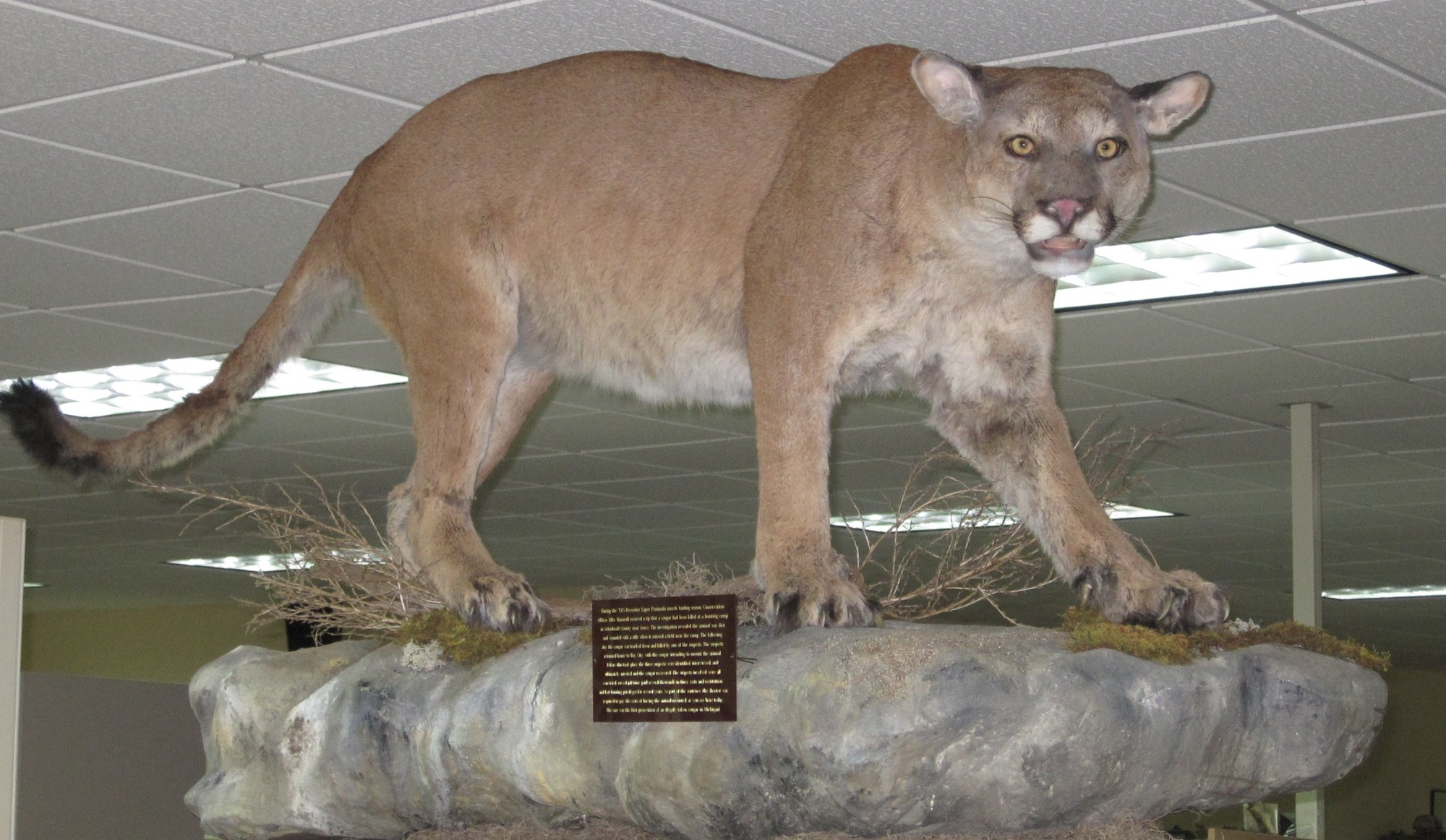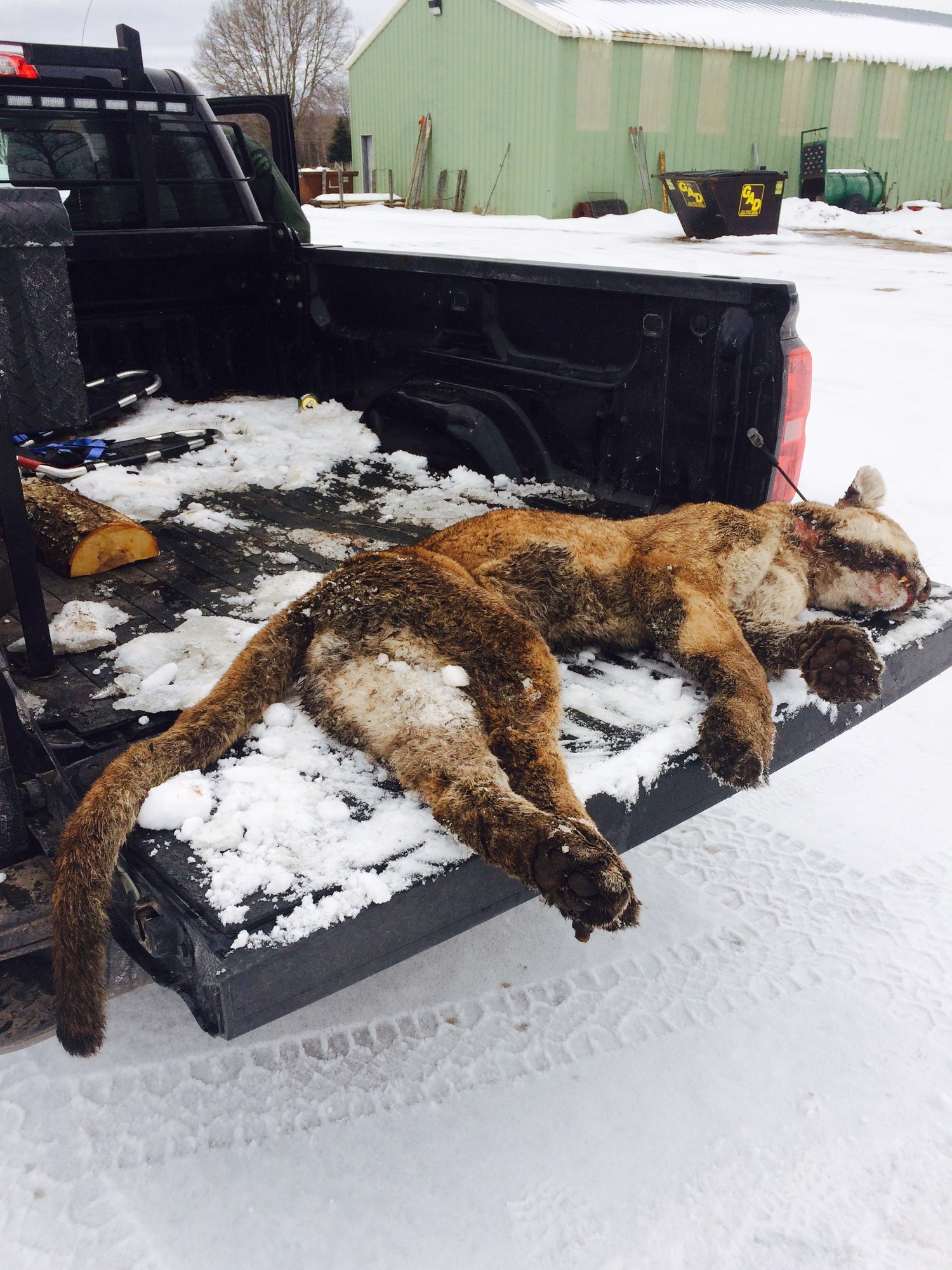Genetic testing on tissue samples from two cougars poached in the Upper Peninsula shows the two animals likely came from a population found generally in South Dakota, Wyoming and northwest Nebraska.
“This genetic research lines up with what we’ve presumed previously, that cougars found in the Upper Peninsula are males dispersing from this population east of the Rocky Mountains,” said Kevin Swanson, a Michigan Department of Natural Resources wildlife management specialist with the agency’s Bear and Wolf Program. “These males dispersed from the main population are looking to establish new territories.”
Since 2008, the DNR has confirmed 35 cougar reports in the Upper Peninsula, but so far there remains no conclusive evidence of a breeding population. No reports have been confirmed from Lower Michigan.
conclusive evidence of a breeding population. No reports have been confirmed from Lower Michigan.
Cougars are an endangered species in Michigan protected by law.
The U.P. cougar confirmations were derived from trail camera video, photographs, tracks, scat or in the case of the two males poached, carcasses.
On Feb. 1, a cougar, or mountain lion, was found dead in Dickinson County, about 4 miles north of Iron Mountain.
Conservation officers investigating the incident said the animal – which a medical examination determined had been in a snare – had been dumped near the intersection of Johnson Road and County Road 607 in Breitung Township.
On April 18, researchers at the National Genomics Center for Wildlife and Fish Conservation in Missoula, Montana received a tissue sample collected Feb. 1 from the dead cougar.
The sample had been sent to the center for genetic evaluation by DNR wildlife biologist Brian Roell in Marquette.
Researchers had previously received another cougar tissue sample from Roell on Aug. 28, 2015, which had been collected Nov. 20, 2013, after the poaching of a cougar in Schoolcraft County.
During the 2013 muzzle-loader deer hunting season, conservation officers received a tip that a cougar had been killed at a hunting camp near Seney.
Investigation revealed the animal was shot and wounded with a rifle when it entered a field near the camp. The following day, the cougar was tracked down and killed by a man developed later as a suspect.
Three men from Bay City were arrested and convicted for poaching the cougar. The men served jail time, paid several thousand dollars in fines, costs and restitution, and lost hunting privileges for several years.
The genetic results from analysis of the two cougar samples were reported recently to the DNR by the center.
 Researchers analyzed the DNA from the two samples using mitochondrial DNA, which traces mother-line ancestry. A haplotype is a group of genes within an organism inherited together from a single parent.
Researchers analyzed the DNA from the two samples using mitochondrial DNA, which traces mother-line ancestry. A haplotype is a group of genes within an organism inherited together from a single parent.
Kristine Pilgrim, genomic laboratory’s supervisor, said the two cougars had a haplotype “M,” which is the most common North American haplotype.
Researchers investigated the potential population of origin for the two cougars using a database which includes samples from cougar populations in South Dakota, North Dakota, Nebraska, Montana, Wyoming, Colorado, New Mexico, Arizona, Texas, Oregon and Florida.
“Preliminary substructure analysis shows that these animals are most closely related to individuals from the region of the Black Hills of Wyoming and South Dakota and northwest Nebraska,” Pilgrim said.
Using the genic information from the tissue samples, matched against results from other cougars in the center’s database, probabilities are calculated for the animal’s origin.
The tissue sample from the cougar from Schoolcraft County showed a probability of 74.1 percent to have come from the Wyoming-South Dakota-Nebraska population, while the Dickinson County cougar’s probability was 99.8 percent.
Researchers caution the probability does not necessarily mean the cougars are directly from that location, because there may be other populations that have not been sampled and included in the database.
“This research adds a couple more pieces to the puzzle, helping us to learn more about the cougars found in the Upper Peninsula,” Swanson said. “We still have not found the presence of any females or cubs, which would indicate a breeding population. This analysis also adds information to the center’s data set.”
According to the U.S. Fish and Wildlife Service, cougars were once the most widely-distributed land animal in the Western Hemisphere, but have been eliminated from about two-thirds of their historic range.
At one time, cougars lived in every eastern state in a variety of habitats including coastal marshes, mountains and forests. They were native to Michigan, but were trapped and hunted from the state around the turn of the 20th Century.
Thirteen western states allow cougar hunting and the North American cougar is listed there as a game species.
The DNR’s Report All Poaching hotline (1-800-292-7800) offers money to tipsters. Information may be provided anonymously.
To learn more about cougars in Michigan, visit www.michigan.gov/cougars.
 Keweenaw Report Your Source for Local News and Sports
Keweenaw Report Your Source for Local News and Sports





